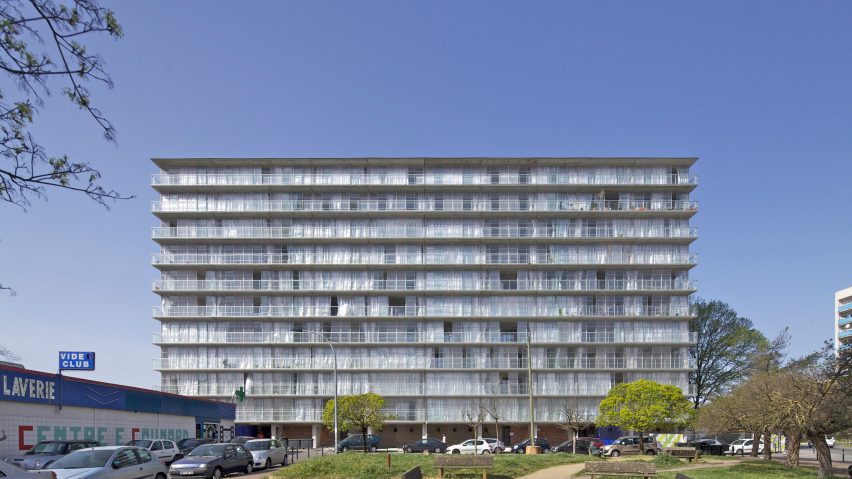The European Union has awarded its annual architecture prize to Transformation of 530 Dwellings, a renovation of 1960s housing in France by Frédéric Druot Architecture, Lacaton & Vassal Architectes and Christophe Hutin Architecture.
The trio of architecture practices wins the European Union Prize for Contemporary Architecture – Mies van der Rohe Award for the project that saw them restore three social housing blocks in Grand Parc Bordeaux.
Demolition was ruled out so the studios instead designed subtle interventions to make the homes brighter, with more outdoor space at every level.
This the second time in the row where the renovation of a public housing scheme has won the prestigious biennial prize, also known as the EU Mies Award, which recognises the best European buildings completed in the past two years.
In 2017 it went to NL Architects and XVW Architectuur's revamp of a 1960s slab block in the Netherlands that had also escaped demolition.
This helps to highlight the ongoing plight of postwar social housing blocks across Europe, many of which are currently under threat.
"The EU Mies Award brings together the diversity of European architecture and culture and promotes architecture worldwide," said Dorte Mandrup, who was chair of the 2019 award.
"Every two years it sets new directions for architecture with the winners, the finalists and all those works represented in it."
The renovation involved the addition of 3.8-metre-deep winter gardens and open-air balconies to each apartment. Small windows were replaced by large glass sliding doors opening on to the winter gardens and outdoor areas.
So as to cause minimum disruption to residents, who remained in their homes during the work, these extensions were made using prefabricated modules. Precast slabs and columns were hoisted into place by cranes to form a freestanding structure, like a scaffold around the facade, with only the foundations made from concrete poured in situ.
The original windows had to be removed carefully due to asbestos-contaminated sills, which were removed to make way for floor-to-ceiling glazing leading to the extensions. The new facades were covered in lightweight corrugated polycarbonate panels and windows in aluminium frames.
New lifts were also put into the three blocks and the access halls were renovated.
Each apartment took between just 12 and 16 days to renovate. Rents were kept at the same rate as before.
The four other shortlisted projects this year were Skanderbeg Square by 51N4E, PC Caritas by Architecten de Vylder Vinck Taillieuin, Terrassenhaus Berlin by Brandlhuber + Emde, Burlon and Muck Petzet Architekten, and Plasencia Auditorium and Congress Centre by SelgasCano.
The winner of the 2019 Emerging Architecture award was architecture studio BAST for its project E26, a school refectory in Montbrun-Bocage, also in France.
BAST using panels of cross-laminated timber (CLT) to form a gabled structure featuring glazed walls set in black aluminium frames. Set on a sanded concrete plinth, the building also boasts rotating arched doors.
These two winners were selected from a total of 383 projects across 38 European countries. The overall winner receives a prize of €60,000 while the emerging architecture studio wins €10,000.
Past winners of the EU Mies Award include Barozzi Veiga's Szczecin Philharmonic Hall in Poland (2015), the Harpa Concert and Conference Centre in Iceland (2013) and David Chipperfield's Neus Museum in Berlin (2011).
Photography is by Philippe Ruault unless otherwise stated.

